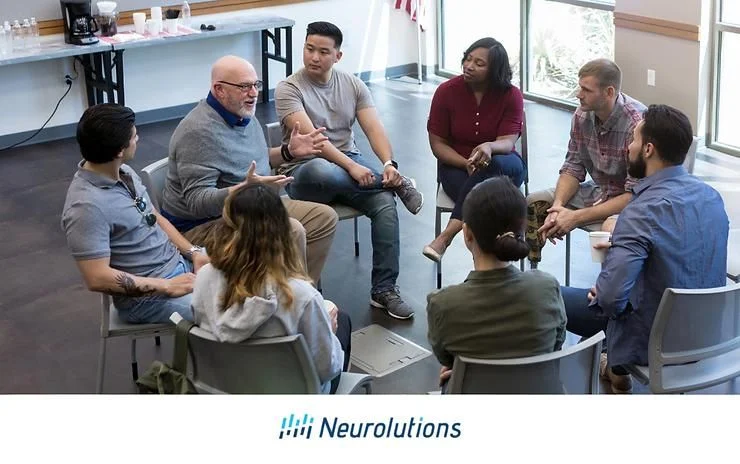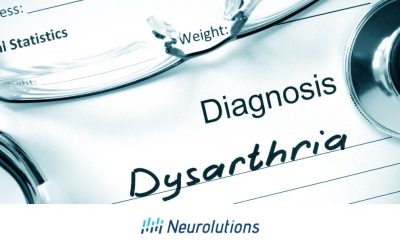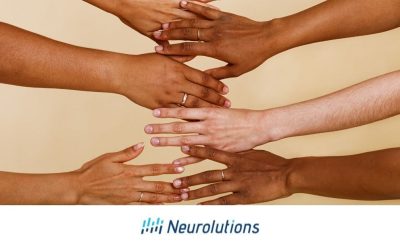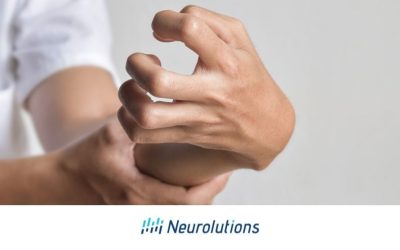Strokes are well known to create a cascade of medical and functional impairments, such as immobility, depression, loss of autonomy, and reduced functional independence. (1) Regardless if the stroke occurred recently or is now considered chronic (>3-6 months post-stroke), it can be very difficult to navigate all the transitions and changes that occur throughout the recovery journey.
The good news is that help is out there. You do not need to do it alone.
Best practice guidelines for stroke support groups endorse those stroke survivors, their families, and caregivers should be assessed and prepared for transitions between care stages and settings through information sharing, education, skills training, psychosocial support, awareness of and assistance in accessing community services and resources. (2)
One critical pathway to obtaining the aforementioned services is through stroke support groups.
This article discusses what to expect from a stroke support group, information about different ways to receive support services and stroke support group resources.
What Is A Stroke Support Group?
Stroke support groups are made of individuals that share the common goal of supporting individuals whose lives have been impacted by a stroke. Although groups may have different mission statements, most provide stroke survivors and their support persons with opportunities for dialogue, building connections, finding meaning, and facilitating education that promotes recovery.
While the majority of them often welcome both survivors and care providers, some provide information intended for the survivor of the stroke while others may be caregiver oriented.
Educational topics offered by stroke support groups may include:
- Advocating for yourself and your loved one
- Coaching to cultivate mindset and perspective to foster determination during recovery
- Speech and language challenges
- Swallowing/dysphagia challenges
- Walking/mobility challenges
- Cognitive challenges
- Upper limb mobility challenges
- Activities of daily living (adaptations, modifications, strategies for independence)
- Return to work/volunteering/leisure activities
- Driving and community mobility
- Anxiety, depression, and other emotional problems
- Sexual expression
- Using music, arts, movement, and sports to enhance recovery
- And many more!
How Can I Find A Local Support Group?
Local support groups generally hold gatherings and events in person. Although many came to a halt during social distancing during the COVID-19 pandemic, many stroke groups are advertising that they have returned.
Local support groups have the ability to customize their topics and education around participants’ requests. These tend to be highly personal- and family-centered. In-person support groups also are beneficial for those that are seeking human connection and building relationships. The network of support can be strong, and it is comforting to know that many of the challenges that you are facing are also experienced by others. People learn during group member discussions, become enlightened, and receive encouragement. Guest speakers are also invited to come to share knowledge and insight on a special topic of interest related to stroke recovery. Although sharing in front of a group is not for everyone, many participants agree that the process gets easier over time.
There are a few ways to begin searching for a local stroke support group. Start by checking with local hospitals, rehab centers, or your primary physician. These entities likely have lists of stroke support groups in your local area. You can also search on the internet for stroke support groups close to home by entering your county name, city, or zip code.
Local meetings are usually held in hospital conference rooms or community centers. Sometimes, the groups offer special events where they meet onsite.
Are There Any Online Stroke Support Groups?
Yes, it is possible to belong to a stroke support group without having to leave the comfort of your own home. Many online stroke support groups are part of a larger entity or organization that offers comprehensive services, such as education on stroke prevention, resources, event hosting, and relationship building. As with in-person and social media support groups, be sure to thoroughly research the organization prior to joining. Consider speaking with the point of contact for the group for information. It also never hurts to ask if certain group members have opened themselves up to be a referral source for the group.
Online stroke support groups may offer large group meetings, small group meetings, and one-on-one appointments. It is now becoming more popular to offer optional “life coaching” services. Some are non-profit and do not have joining fees, while others may be upfront that there is a cost associated with the group entry. As with any stroke support group, be sure to understand all terms and conditions.
Are There Any Virtual Stroke Support Groups Provided On Social Media?
Yes! There are hundreds of virtual support groups that focus specifically on stroke.
It is important to note that the organizers of these groups have different objectives that are not always forthcoming. Some stroke support groups are affiliated with an organization (e.g. profit or non-profit association, industry vendor that sells a product). Others were organized by an individual or group that saw a need for stroke support and outreach and therefore built the group around their mission and vision. Always be sure to understand as much as you can about the group prior to joining so you gauge if their operations and values align with your needs.
There are (potential) advantages and disadvantages to consider prior to registering your name in an online support group for stroke.
Advantages of Social Media Support Groups:
Online support groups are convenient, and accessible, and store a wealth of information that you can scroll through on your laptop or smartphone. Because online support is so accessible and often does not have a specific “session time,” joining one or more groups allows you to receive information and ask questions within minutes. Many platforms will also allow you to search for topics within the application.
For example, when hashtags (#) are used on certain topics or discussion boards, smart technology will auto-populate posts that contain that hashtag. Although this may not be an advantage to some individuals, aside from your name identifier and any personal information you reveal, virtual support groups allow a certain amount of anonymity. In-person groups are face-to-face and can be considered too vulnerable to individuals, and therefore not having to be in front of others can take some pressure off the person.
Disadvantages of Social Media Support Groups:
The experience of virtual stroke support groups is not as intimate and does not draw people together as in-person interactions. Therefore, if you are seeking out friendships that build through face-to-face bonding, virtual support groups do not provide that experience. Depending on the online platform, the expansive geographical area and social makeup of the groups are often diverse. It can be a learning experience engaging with survivors thousands of miles away or in another country, but there are occasionally barriers in language, terminology, health care system operations, and cultural constructs that you may not relate with.
Another consideration is privacy in digital media is not always secure. Many organizations keep their stroke support group “gated” (i.e. not public, administrator screens group members), while others do not. Either way, individuals are subject to other people and databases knowing personal information about them. Advice often comes anecdotally from non-experts in the field of stroke rehabilitation, so individuals have to be careful about what they decide to implement and always consult with their healthcare provider before trying something new. Many stroke survivors and care providers supplement online/virtual stroke support groups with live (in-person) group sessions.
How To Get Involved With Online (Social Media) Stroke Support Groups:
Step 1 – Pick a Platform:
Decide what digital application you want to use for your support group.
Examples:
- Internet (e.g. Google, Yahoo)
- Influencer website/social media pages
Step 2 – Research Keywords:
Perform a general “keyword search” in the search bar to populate stroke support groups. Start by typing “stroke support groups.” Filtering will auto-generate other frequent search options for your viewing.
Examples of keywords (general):
- stroke support, stroke group, stroke support group
- stroke help
- stroke advice
- stroke caregiver support, stroke caregiver group
If the application allows, apply filters to help you narrow down your optimal preferences.
Examples of specific searches related to stroke:
- Young survivors
- Aphasia
- Basal ganglia
- Dating and intimacy
Some of them are gated, which means you may have to fill out a short survey explaining your purposes for joining the group and agreeing to terms and conditions (e.g. no advertising, be kind and courteous, no bullying).
Step 3 – Collect the Facts:
Get all the facts before joining. Read the group description carefully. Understand if it is public or private.
Check how many people are a part of the group (remember bigger can be a good thing, but not all the time). If you do not feel comfortable answering questions that need to be reviewed prior to the group administrator accepting membership, move on to the next group. Groups should be able to be canceled at any time, but once you put information on the page, there are no guarantees that it won’t be visible– even if you try to remove your post.
It is highly beneficial and recommended that survivors and their care partners find a support group that offers a healthy network of friends sharing a similar experience as well as receiving resources and guidance throughout the months and years that pass by after the onset of stroke.
It may be worthwhile to explore several groups before deciding which one works best for your needs. It is also possible to be a member of a combination of stroke support groups.
For more resources, please visit these networks to support your search. *
Stroke Support Group Finder (Stroke.org)
References and Resources
*Disclaimer: All third-party links and resources provided by Neurolutions are for informational purposes only. Neurolutions, Inc. cannot make referrals or provide recommendations to specific stroke support groups, healthcare practitioners, or healthcare institutions. Neurolutions Inc. cannot maintain current information on whether such organizations or persons meet professional criteria or acknowledge quality. This information is not a guarantee of the quality of the individually run Neurolutions Inc. from any responsibility, liability, or claim. Neurolutions Inc. does not hold liability and provides no responsibility for claims of the education information Please consult and pursue information with your healthcare provider, local health department, medical association, or society to make the most informed decision for your individualized needs.




